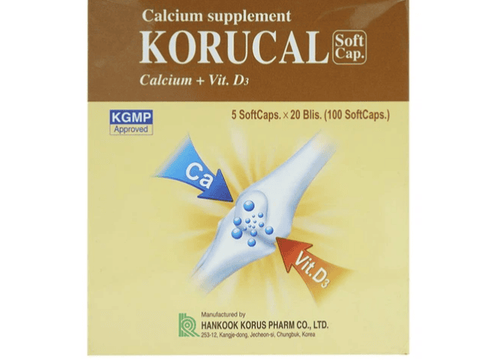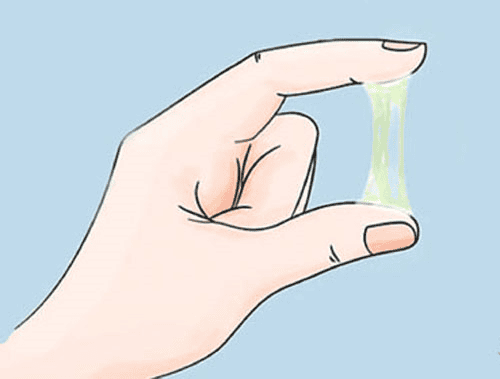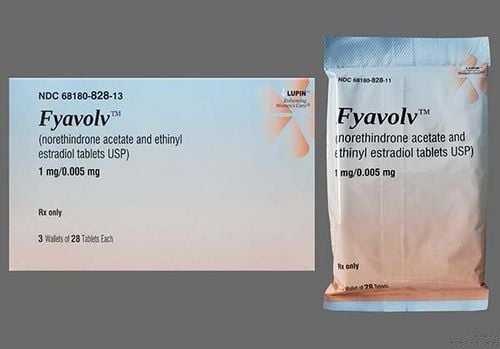This is an automatically translated article.
Vaginal atrophy is a condition in which the vagina thins and easily causes vaginitis. The main cause of vaginal atrophy is that the decline in estrogen makes vaginal tissues thin, dry, and less elastic. As a result, natural sexual function is reduced, negatively affecting women's health and daily life.1. Definition of vaginal atrophy
Vaginal atrophy (atrophic vaginitis) is a condition in which the vaginal wall becomes thin, dry and inflamed due to low levels of estrogen in the body. Vaginal atrophy most commonly occurs after menopause.
For many women, vaginal atrophy not only causes pain during intercourse, but also leads to painful urinary tract symptoms. Because of the bridging nature of vaginal and urinary symptoms of this condition, experts agree on a more accurate term for vaginal atrophy and its accompanying symptoms as "temporary urogenital syndrome." menopause (GSM)”.
Basically, there are effective treatments for menopausal urogenital syndromes such as vaginal atrophy and accompanying urinary symptoms. Low estrogen levels cause many changes in your body, but that doesn't mean you have to live with the discomfort of the disease.
Prevalence of Vaginal Atrophy: Between 10-40% of women experience atrophic vaginitis symptoms after menopause, but only 20-25% of those with symptoms need treatment. Talk to your doctor for more information.
2. Symptoms of vaginal atrophy
What are the signs and symptoms of vaginal atrophy?
Common symptoms of vaginal atrophy are:
Vaginal dryness Burning vaginal discharge Vaginal itching Genital itching Burning urination Urgency to urinate Frequent urinary tract infections Urinary incontinence Light bleeding after intercourse Discomfort during intercourse Vaginal lubrication decreases with sexual activity Vaginal canal shortens and tightens

Teo âm đạo là tình trạng thành âm đạo mỏng đi, khô và viêm.
3. Causes of vaginal atrophy
Menopausal urogenital syndrome caused by a decrease in estrogen production. Less estrogen makes vaginal tissue thinner, drier, less elastic, and weaker.
Possible drop in estrogen levels:
After menopause Years before menopause (perimenopause) After surgery to remove both ovaries (surgical menopause) After regional radiation therapy Pelvic Cancer After Cancer Chemotherapy Side Effects of Breast Cancer Hormones Signs and symptoms of vaginal atrophy can start to bother a patient during the early perimenopause years menstruation or several years into menopause. Although vaginal atrophy is fairly common, not all postmenopausal women experience it. Maintain healthy vaginal tissue by having regular sex, even masturbation.
4. Risk factors
There are many risk factors for vaginal atrophy such as:
Smoking: Smoking affects blood circulation, resulting in the vagina and other tissues not receiving enough oxygen. Smoking also reduces the effects of natural estrogen on the body. In addition, women who smoke often experience early menopause. Non-Vaginal Delivery: Researchers observed that women who did not give birth vaginally were more likely to experience vaginal atrophy than women who gave birth vaginally. Sexual inactivity: Sex or masturbation increases blood circulation and makes vaginal tissues more elastic.
5. Diagnosis and treatment
The information provided below is not a substitute for medical professional advice. Always consult your doctor for the best diagnosis and treatment.
Hormone estrogen giảm làm cho mô âm đạo mỏng hơn, khô hơn, ít co giãn và yếu hơn.
5.1 Diagnosis Before performing tests to diagnose atrophic vaginitis, your doctor will perform a physical exam and ask about your medical history and habits about the use of topical irritants causing or aggravating them. soap- or perfume-like symptoms.
Vaginal pH or acidity: A pH in a patient's vagina of 4.6 or higher can help doctors identify atrophic vaginitis. A normal vagina has a pH of 4.5 or less. Screening for infection and testing for diabetes: especially in cases of discharge or bleeding. Examples of infections that may also occur include candidiasis, endometriosis, and bacterial vaginosis. Atrophic vaginitis can make the area vulnerable to infection. It can occur along with an infection. Diabetes testing may be done to rule out diabetes. Biopsy: If the diagnosis is unclear or malignancy is suspected, the doctor may order a biopsy to rule out cancer. Vaginal examination: May cause discomfort or pain in patients with atrophic vaginitis. 5.2 Treatment Topical treatments may be helpful.
For mild cases, water-soluble vaginal lubricants make intercourse easier. Lubricating oil, mineral oil or other oils are not suitable. These substances can increase the risk of infection and can damage condoms or diaphragms. Hormone replacement therapy (HRT) such as pills, gels, patches, or implants can deliver systemic estrogen. This is effective, but can have side effects. Patients should discuss the long-term risks of this therapy with their doctor. Local hormone replacement therapy is applied topically and focused on the affected area. Low-dose estriol cream can be used to stimulate rapid reproduction and repair of vaginal epithelial cells. Vaginal tablets, creams, rings, and rings may be placed inside to deliver estrogen to the vaginal area. Regular exercise is important because it helps with blood circulation and increases blood circulation in the genitals. Experimenting with the diet can also be effective. Phytoestrogens, flaxseed, fish oil, and black cohosh can help reduce atrophic vaginitis.

Khám sàng lọc bệnh lý phụ khoa tại Bệnh viện Đa khoa Quốc tế Vinmec, giúp phát hiện và điều trị kịp thời các bệnh lý phụ khoa.
5.3 Prevention Living habits to prevent and control vaginal atrophy include:
A reasonable diet such as using plant estrogens, fish oil,... helps reduce atrophic vaginitis. Try an over-the-counter moisturizer. This helps restore moisture in the vaginal area. Use an over-the-counter water-based lubricant. This can reduce discomfort during intercourse. Make time to cuddle before intercourse. Using vaginal lubricants for irritation can reduce symptoms of dryness and burning. Vaginal atrophy has a significant impact on women's health and life, so when you see symptoms such as: Painful intercourse that can't be resolved with vaginal moisturizers or lubricating solutions (the type of vaginal atrophy). contains glycerin, Astroglide, KY Intrigue, others). Or you may have vaginal symptoms such as unusual bleeding, discharge, burning or pain. Immediately go to a medical facility for examination, diagnosis and timely intervention.
Basic gynecological examination and screening package at Vinmec International General Hospital for customers with abnormal symptoms such as: Abnormal vaginal bleeding; Menstrual problems; Abnormal vaginal discharge (with a bad smell, a different color than usual); Vaginal pain, itching.... Female client has several risk factors such as poor personal hygiene, unsafe sex, abortion, etc. Female client has other symptoms of infection ...
When registering for the basic gynecological examination and screening package at Vinmec, you can perform ultrasound and examination techniques for early detection of inflammatory diseases for easy treatment. costly; Screening for early detection of gynecological cancer.
If you want to book an appointment and consult with us, you can contact Vinmec Hospitals and Clinics nationwide HERE.













